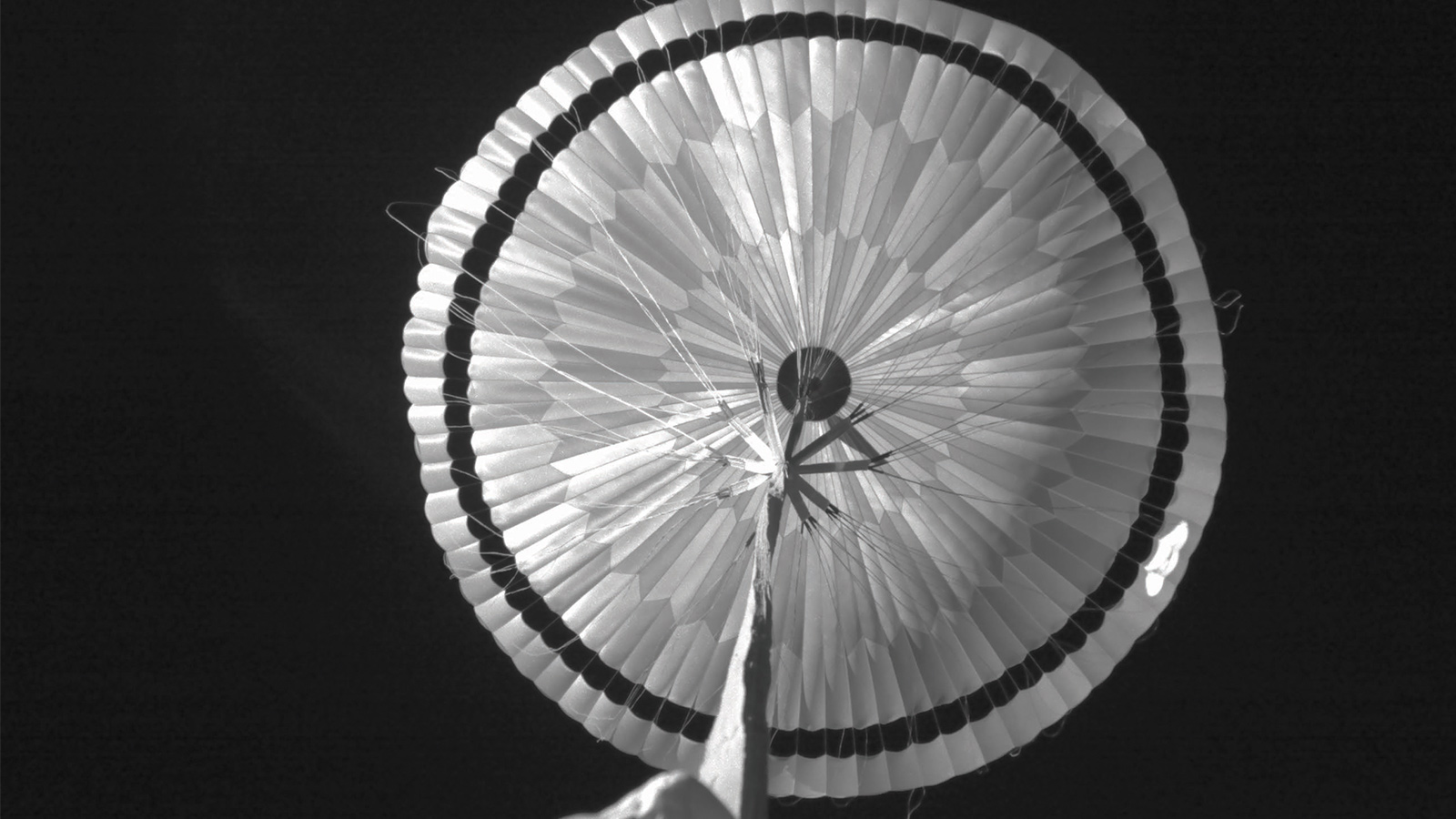Stay Up to Date
Submit your email address to receive the latest industry and Aerospace America news.
The Aerodynamic Decelerator Systems Technical Committee focuses on development and application of aerodynamic decelerator systems and lifting parachutes, pararotators, and inflatables for deceleration, sustentation and landing of manned and unmanned vehicles.
In the space realm, NASA’s Jet Propulsion Laboratory in California conducted the second and third flights of the supersonic parachute system for the Mars 2020 rover mission. A two-stage sounding rocket was launched from Wallops Flight Facility in Virginia and released this parachute over the Atlantic Ocean at an altitude and Mach number to produce conditions relevant to those of a Mars entry. The parachute inflated and in the last test withstood a 300 kilonewton inflation force.
These Advanced Supersonic Parachute Inflation Research Experiments, ASPIRE, mark the first full-scale supersonic parachute tests in direct support of a Mars mission since the Viking missions to Mars of the 1970s. The March and September flights were different from ASPIRE’s debut flight in November 2017 in that engineers flew a strengthened version of the 21.5-meter-diameter Disk-Gap-Band parachute design. Incorporating stronger suspension lines and a new specification of woven Nylon broadcloth, the strengthened design was tested at dynamic pressures above 1,000 Pascals and Mach numbers near 2.0. The inflation loads for both tests were the highest supersonic loads ever survived by a parachute of this scale.
Also, the NASA Orion Capsule Parachute Assembly System completed qualification testing in September with the final of eight airdrop tests performed at the U.S. Army Yuma Proving Grounds in Arizona. The final model and simulation validation as well as requirement verification were scheduled to continue with the System Acceptance Review expected in late 2019. This acceptance will mark the certification of the parachute system for human missions. The expertise accumulated during this project has been applied to NASA’s interaction with Commercial Crew Program Aerodynamic Decelerator Systems design and qualification testing.
Turning to defense, the U.S. Army Natick Soldier Research, Development, and Engineering Center conducted hundreds of airdrop tests averaging nine lifts and 50 payloads per week every two months this year to include the next generation high altitude self-guided airdrop systems in the 20- to 200-kilogram weight range with technology for vision navigation in a GPS denied/degraded environment and increased accuracy/maneuverability for urban navigation. This was done under a program called AAIRDUCT, short for the Autonomous Aerial Insertion and Resupply into Dense, Urban, Complex Terrain. The program was started in March after the Office of the Secretary of Defense approved AAIRDUCT as a fiscal 2018 new start Joint Capability Technology Demonstration with numerous partner organizations. Another is dispersion of information material, such as leaflets or humanitarian aid, directly to populated areas safely with the Multi-Use Aerial Dispersing System. This system is released from a high altitude and deploys its small payloads from a larger airdrop bundle at a specific altitude and location to optimize dispersion to a targeted area.
The Natick center, which invests in new component development, began modeling and simulation efforts to design for the lowest release altitude possible of the Heavy Equipment Large Low Velocity Airdrop System, a project that began in May. It seeks to expand airdrop capability from the fielded Low Velocity Airdrop System maximum all up weight of approximately 19,000 kilograms to a weight of about 36,000 kilograms, utilizing the C-17 aircraft. Areas of investigation this year included the aircraft extraction system, cargo platform and performance of existing Army parachutes in larger clusters, and include prototype components and ground/structural testing.
The Natick center also investigated flow-induced vibrations, motivated by vibrations experienced by parachute suspension lines, in work that will continue in 2019 under the leadership of Army researcher Keith Bergeron. Using cyber-physical fluid dynamics experiments and fluid-structure simulations at the University of Massachusetts Lowell, researchers will continue their integrated approach to include modeling of torsional stiffness properties for braided cords and a new series of computational fluid dynamics simulations. The 2018 research was done in collaboration with the aerodynamics team from the Institut Supérieur de l’Aéronautique et de l’Espace, in Toulouse France, which will continue participating in 2019. The objective is to develop a better understanding of the drag contribution made by suspension lines and new designs to optimize parachute performance.
Photo: A strengthened version of the 21.5-meter Disk-Gap-Band parachute that landed the Curiosity rover on Mars in 2012 was flown on a test flight in March 2018. Credit: NASA
Stay Up to Date
Submit your email address to receive the latest industry and Aerospace America news.




